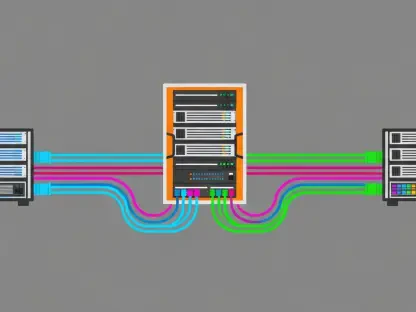In the wake of rising cyber threats and increasingly stringent regulations, organizations must bolster their cybersecurity frameworks to mitigate risks and ensure compliance. Recent data revealed that the average cost of a data breach has surged by 10% this year, emphasizing the significant financial implications of security lapses and non-compliance. For businesses reliant on mainframe systems, staying ahead of these evolving threats while navigating complex regulatory landscapes has become paramount.
New Regulatory Compliance Requirements
Digital Operational Resilience Act (DORA)
The Digital Operational Resilience Act (DORA), now fully effective as of January 17, mandates financial services organizations across Europe to implement comprehensive risk management frameworks that fortify operational resilience against various threats. DORA’s directives encompass a range of elements, including stringent vulnerability management practices, efficient data recovery and resilience strategies, and robust support for open-source software. These requirements necessitate that businesses place a strong emphasis on identifying and addressing vulnerabilities, ensuring that any potential weaknesses are promptly managed and mitigated.
Organizations must also develop and maintain effective data recovery plans that guarantee continuous operations in the event of disruptions. By fostering resilience, businesses can minimize downtime and protect both their operations and customer data. The act’s support for open-source software presents its own set of challenges and opportunities; companies must balance the flexibility and cost-effectiveness of open-source solutions with the need for rigorous security measures. As cyber threats evolve, embracing a proactive stance on data integrity and system robustness becomes critical for compliance with DORA’s stringent requirements.
PCI DSS 4.0 Implementation
The Payment Card Industry Data Security Standard (PCI DSS) 4.0, expected to be fully implemented by March 31, introduces updated technical and operational requirements designed to safeguard cardholder data. This new version enforces more stringent controls, requiring businesses to enhance their authentication protocols, develop more sophisticated access control mechanisms, and ensure comprehensive encryption of sensitive information. These measures are aimed at mitigating the risk of unauthorized access and data breaches.
Meeting PCI DSS 4.0 requirements necessitates ongoing investments in the latest security technologies and continuous monitoring of systems for potential vulnerabilities. Companies are advised to adopt multi-layered security approaches, incorporating tools that facilitate real-time threat detection and response. By integrating these advanced security measures, businesses not only protect cardholder data but also reinforce customer trust and loyalty. Proactive adaptation to PCI DSS 4.0 helps create robust defenses against evolving cyber threats, demonstrating a company’s commitment to maintaining high security standards.
Developing Scalable Risk Management Strategies
Comprehensive Disaster Recovery Plans
Organizations must prioritize the development of scalable risk management frameworks to effectively navigate the landscape of cybersecurity threats and regulatory demands. Central to this strategy is the creation of comprehensive disaster recovery plans that can be quickly implemented in response to cyber incidents. These plans should outline specific procedures for restoring data, applications, and critical operations, ensuring minimal disruptions and swift recovery post-attack.
Continuous testing and revision of these plans are essential to address changing threat landscapes and potential vulnerabilities. Periodic drills and simulated attacks can help identify weaknesses and streamline response actions, ensuring readiness when real threats emerge. Additionally, integrating advanced authentication tools within these recovery plans strengthens defenses against unauthorized access to systems, safeguarding sensitive data from malicious actors. This multifaceted approach to disaster recovery enables organizations to maintain operational continuity and resilience even in the face of sophisticated cyber threats.
Implementing Continuous Testing and Authentication Tools
Continuous testing is a fundamental component of any effective cybersecurity strategy, allowing organizations to identify and address vulnerabilities before they can be exploited. By regularly assessing system defenses and utilizing penetration testing services, businesses can uncover potential weaknesses and implement necessary improvements. Automated testing tools offer real-time monitoring, providing actionable insights to enhance security measures and compliance with regulatory frameworks like DORA and PCI DSS 4.0.
Authentication tools play a crucial role in safeguarding data and systems from unauthorized access. Implementing multi-factor authentication (MFA) and other advanced authentication mechanisms can significantly reduce the risk of cyber attacks. These tools ensure that only authorized personnel have access to critical systems and data, thereby mitigating potential breaches. By continuously testing and refining these authentication protocols, organizations fortify their security postures, demonstrating a consistent commitment to staying ahead of cyber threats and fulfilling regulatory requirements.
Overcoming Remote Access Challenges
Enhancing Secure Host Access Solutions
The shift towards remote work has introduced additional complexities in managing secure access to IT operations. Regulators have responded by emphasizing robust protections against unauthorized data access and potential system damage. Secure host access solutions become indispensable in this context, providing secure connectivity for remote employees while ensuring that critical systems remain protected.
To address these challenges, organizations must invest in advanced security tools that offer secure and encrypted remote access capabilities. Solutions such as Virtual Private Networks (VPNs) and zero-trust security frameworks provide additional layers of protection, verifying user identity and enforcing strict access controls. By implementing these secure access measures, companies can safeguard their IT infrastructure from remote access vulnerabilities and maintain the integrity of their operations.
Pursuing Comprehensive Risk Management Approaches
To stay ahead of cybersecurity threats, organizations must adopt comprehensive risk management approaches that encompass vulnerability management tools and robust data recovery solutions. These proactive measures ensure that potential threats are identified and addressed promptly, minimizing the risk of data breaches and operational disruptions. Supporting open-source systems further enhances resilience by leveraging the strengths and flexibility of diversified software solutions without compromising security.
Partnering with experts in the field, such as Rocket Software, can help businesses align their security strategies with evolving regulatory requirements. Services like compliance assessments, penetration testing, and conversion services ensure that organizations stay compliant with internal policies and external regulations. By leveraging these partnerships and embracing a proactive approach to cybersecurity, companies can effectively manage the dynamic threats and regulatory demands they face.
Proactive Measures for Thriving Amid Cyber Threats
Investing in Security Technologies and Partnerships
For organizations to thrive amid evolving cybersecurity threats, a proactive approach to security technologies and strategic partnerships is essential. Investments in the latest security technologies, such as artificial intelligence and machine learning, can enhance threat detection and response capabilities. These advanced technologies offer real-time monitoring and predictive analytics, helping businesses stay one step ahead of potential cyber threats.
Strategic partnerships with cybersecurity experts provide valuable insights and resources that bolster an organization’s defenses. By collaborating with entities that specialize in compliance and risk management, companies can ensure that their security frameworks meet current and future regulatory requirements. These partnerships provide access to cutting-edge technologies, industry best practices, and specialized expertise, enabling organizations to navigate the complex cybersecurity landscape with confidence and agility.
Creating a Culture of Continuous Improvement
In light of the growing cyber threats and increasingly tight regulations, organizations need to reinforce their cybersecurity frameworks to reduce risks and ensure they’re meeting compliance standards. Recent statistics show that the average cost of a data breach has risen by 10% this year alone, highlighting the serious financial consequences that security lapses and non-compliance can bring to a business. This has significant implications, especially for companies relying heavily on mainframe systems. These businesses now face the dual challenge of staying ahead of constantly evolving threats while also navigating a complex and ever-changing regulatory environment. As the frequency and sophistication of cyber attacks continue to rise, investing in robust cybersecurity measures is no longer optional but essential for safeguarding sensitive data and maintaining regulatory compliance. Failure to do so not only risks financial loss but also legal repercussions and damage to reputation, making it imperative for organizations to prioritize cybersecurity initiatives.









